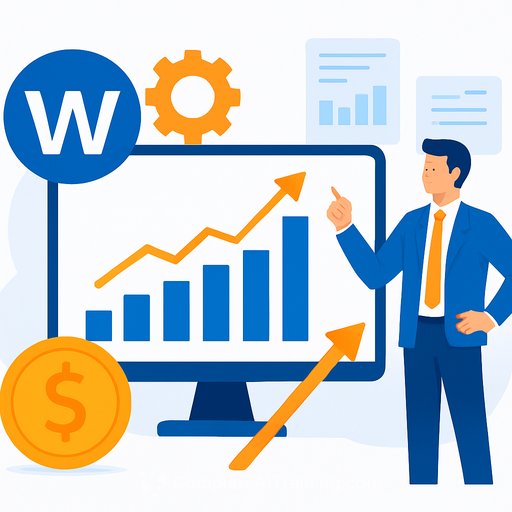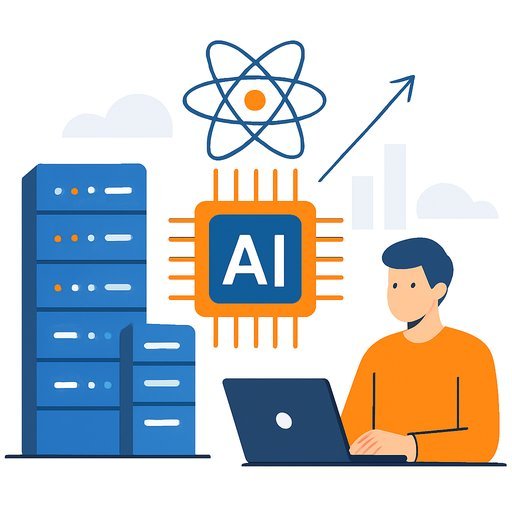AI Profitability: Why 2026-2027 Could Be the Turn
Investors keep asking the same thing: when does AI pay the bills? The most realistic answer right now is incremental gains starting in 2026, with more meaningful traction into 2027.
Not a flood. Pockets of profit. The wins will show up in specific workflows where AI cuts time or errors, or unlocks throughput without adding headcount.
Where Returns Are Likely to Show Up First
- Vertical software: targeted copilots that remove drudge work for finance, operations, and support teams-think faster close, cleaner reconciliations, tighter variance analysis.
- Factory and logistics automation: computer vision and scheduling tools that reduce downtime, rework, and scrap; lower-cost quality checks at the edge.
- Customer operations: smarter triage, self-serve improvements, and agent assist that reduce cost-to-serve and shrink handle times.
- Sales ops and pricing: lead scoring, proposal drafting, and pricing guardrails that improve conversion without discount creep.
- Internal dev tooling: model-assisted scripting and report generation for finance engineering and data teams that shortens cycle times.
- Edge inference: moving certain workloads from cloud to on-prem or device to cut latency, data egress fees, and per-call costs.
Why Hybrid AI Matters to Finance
Hybrid AI blends cloud services with on-prem or edge inference. It's less about hype and more about unit economics and control. Keep sensitive data close, run latency-sensitive tasks locally, and reserve the cloud for what actually needs scale.
- Cost mix: training (rare), fine-tuning (occasional), inference (ongoing). Most P&Ls are dominated by inference and data movement.
- Key levers: GPU utilization, context length, compression, batching, and caching; avoiding high egress; right-sizing models per task.
- Compliance and residency: local processing can reduce exposure and penalties while easing audit requirements.
- Latency-driven revenue: faster decisions in trading, pricing, or routing can change outcomes; every millisecond has a value.
Budget Questions to Ask Now
- What's our cost per task completed vs. the pre-AI baseline? Show me the before/after workflow map and time study.
- What portion of spend is model calls vs. data engineering, infra, and integration? Where is waste hiding?
- Do we have a smaller, cheaper model that meets the SLA for 80% of use cases?
- What's the payback period, IRR, and break-even volume for each pilot moving to production?
- Which workloads should shift to on-prem or edge to avoid egress and reduce latency?
- Are we locking into any single vendor's pricing power? What's the exit plan?
Metrics That Prove It Works
- Cost per task (or per 1,000 requests) vs. baseline process cost
- Cycle time reduction and hours saved per FTE per month
- Error rate, rework percentage, and yield improvements
- Cost-to-serve and first-contact resolution in support
- Pipeline conversion and average selling price (with attribution)
- GPU hours utilized vs. allocated; model call cache hit rate
- Payback period, NPV, and EBITDA margin impact by use case
Governance That Keeps Costs in Check
- Gate every pilot with a unit-economics template and a kill switch if targets aren't met in 60-90 days.
- Centralize procurement for model APIs and accelerators; enforce quotas and tagging for cost tracking.
- Separate PII and crown-jewel data; log prompts, outputs, and model versions for audit.
- Assess model drift monthly; revalidate benchmarks after updates or data shifts.
A Realistic Timeline
- 2025: Consolidation. Fewer experiments, more focus on data quality, workflow redesign, and unit economics.
- 2026: First scaled wins. Niche software and operational automation start to show clear TCO and ROI improvements.
- 2027: Broader rollout. Finance teams standardize on metrics and governance; hybrid architectures become default for cost and control.
Some high-profile labs may still be chasing profitability later in the decade. That doesn't stop enterprises from capturing savings in targeted areas long before that.
90-Day Action Plan for Finance Leaders
- Inventory every AI initiative. Kill vanity projects; double down on two use cases with line-of-sight ROI.
- Build a cost model: infra, data, model calls, integration, and change management. Assign owners.
- Pilot hybrid: run the same task with a small local model and a managed API; compare cost, quality, and latency.
- Set procurement guardrails: reserved capacity, batching, caching, and model-size policies by SLA tier.
- Publish a monthly AI scorecard with the metrics above. Reward teams that hit payback targets.
If you want a quick scan of practical tools that help finance teams reduce process time and error rates, this curated list is useful: AI tools for finance.
For risk and governance alignment, the NIST AI Risk Management Framework is a solid reference for controls and documentation.
The short version: expect steady, measurable wins-not fireworks. Treat AI like any other capital project, enforce unit economics, and the returns in 2026-2027 will take care of themselves.
Your membership also unlocks:





